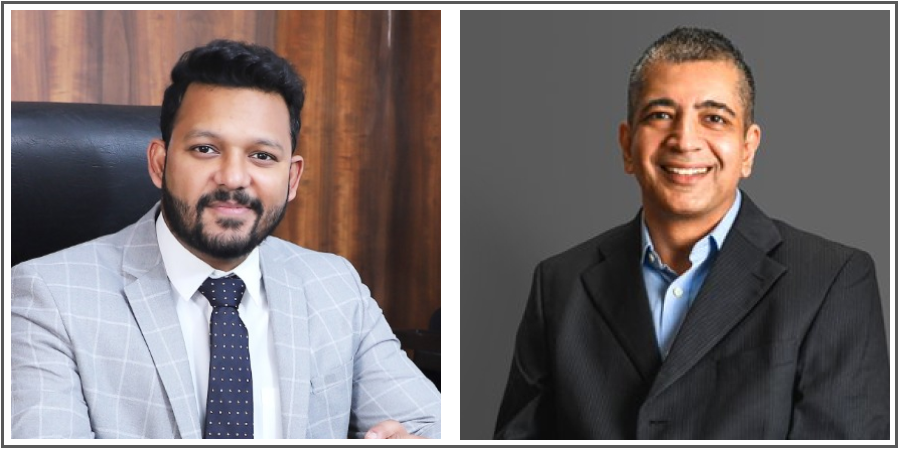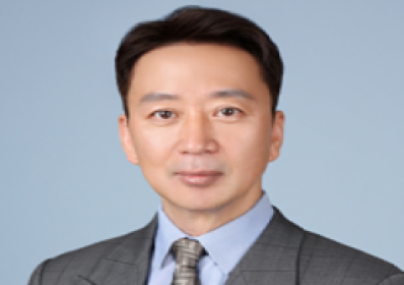
During a technological revolution, the legal industry plays a pivotal role in ensuring continuous innovation by protecting intellectual property. In this context, two prominent intellectual property lawyers in the country shed light on the unique challenges faced by India’s IP market, providing insights into how their practice is navigating the growing challenges of IP protection in the digital age.
ALB: Over the past year, can you highlight a significant case or project in the field of intellectual property that you worked on, showcasing the unique challenges and solutions you provided for your clients?
Arjit Benjamin, associate partner, Pro-soll Law: There was an ongoing debate this year over whether music can be played in marriage-related ceremonies in locations where there is a possibility of a commercial gain. We were approached by a client pursuant to a license fee demand by a copyright society for their music to be played in a certain hotel premises. There were mixed opinions by various courts on the said aspect till the Department of Promotion of Industry and Internal Trade (DPIIT) issued a public notice in July highlighting that playing of sound recordings or live performance of songs in marriages and other social festivities associated with marriage without obtain-ing licenses should not be considered as copyright infringement, but what qualified as social festivities associated with marriage is still not clear. Will a marriage anniversary qualify as a festivity associated with marriage, or will a marriage reception held a fortnight after the marriage ceremony qualify as a festivity associated with marriage? We are currently assisting our clients in pursuing the cases on the basis of the nature of the events, the nature of the festivities and the extent of the association with marriage.
Rahul Parmar, co-founding partner, InventIP Legal Services: One standout instance was our assistance in defending a potential patent infringement suit. Through meticulous analysis, we were able to clearly distinguish our client’s products and software from the alleged patent, averting what could have amounted to a significant financial burden potentially ranging between $1.5 and $3 million. Additionally, we contributed to the establishment of structured processes for capturing patent-worthy ideas and setting up efficient intellectual property (IP) procedures. Our involvement extends to participating in the patent committee, which regularly convenes to assess ideas originating from various sources and recommends those deemed worthy of filing to the higher management. Following approval, we assisted them in drafting, filing and prosecuting patent applications, ensuring comprehensive support throughout the IP lifecycle.
ALB: In the realm of intellectual property, client requirements can vary widely. Could you share an example of a client with specific needs or expectations that required a tailored approach and how you addressed those demands effectively?
Benjamin: We recently advised an international technology company on issues arising out of violation of obligations under a technology licensing agreement with an Indian entity, pertaining to misuse of their IP. We helped the client identify and articulate the specific rights and obligations related to the use, transfer, and protection of the licensed technology, which included specifying payment terms, duration of the license, and restrictions on use or sublicensing. The client also apprehended that the Indian entity may misappropriate the IP. We advised the clients on confidentiality and non-disclosure provisions to prevent the misappropriation, including the scope, duration and permitted uses of confidential information. We followed an approach that was a unique combination of legal expertise, industry knowledge, cultural understanding, and a keen awareness of the unique aspects of the technology being licensed, which helped in advising the clients to devise a strategy that not only met legal requirements but also served the commercial objectives of the parties involved.
Parmar: A client operating in the technology sector, who had a unique portfolio of innovations spanning hardware, software, and proprietary algorithms, came to us with specific needs that necessitated a tailored approach. The client’s emphasis on rapid product development cycles required an accelerated patent filing process, prompting us to streamline internal workflows and collaborate closely with inventors to meet tight deadlines. In another example, a founder of the social enterprise ‘Geeli Mitti’ that works on generating livelihood for marginalised communities, asked if there was a way to protect their innovative idea related to brick composition. Based on initial discussion, we suggested that filing a patent application would be the best way forward. They had almost zero written material as to the composition and the overall process of manufacturing these bricks. We held numerous detailed discussions to extract essential information for a well-drafted patent application. We guided them by showcasing relevant granted patents and walking them through the technical depth necessary for a comprehensive patent application. We conducted a patent-ability search and transformed complex information into easily understandable content that highlighted the nuances of their innovation. We drafted a patent application, which got granted within a year of filing without even moving on to the hearing stage.
ALB: With the rapid advancements in technology, particularly in generative AI, how has your practice adapted to the changing landscape of intellectual property law? Have you encountered any novel challenges or opportunities arising from these emerging technologies?
Benjamin: While the preservation of creators and innovators’ rights remains of utmost importance, fostering an environment conducive to AI-driven innovation is equally imperative. Revisions within India’s copyright and trademark framework should aspire to explicitly delineate authorship and ownership con-cerning AI-generated creations, tackle the criteria of originality for such works, establish lucid directives for copyright infringe-ment involving AI, and offer insights into fair use within the purview of the Copyright Act of 1957. Concurrently, the Trade Marks Act of 1999 should bring forth clarity regarding the distinctiveness and protectability of AI-generated trademarks, elucidating the role of AI in the context of trademark registration.
Parmar: With the rise of generative AI, we acknowledge its unique challenges, such as determining ownership rights for AI-generated works. Our IP professionals investigated these complexities, providing complete advice on intellectual property protection, licensing, and enforcement in the context of AI-generated technologies. InventIP has also managed to discover fresh opportunities in this dynamic environment. Our team is constantly looking for new ways to use generative AI to serve our clients, whether to speed up patent searches, improve trademark analysis, or streamline the IP management process with utmost caution.
ALB: As businesses increasingly embrace digital platforms and online presence, how has the demand for intellectual property services evolved? Are there specific trends or patterns you’ve observed in the types of IP issues clients are seeking assistance with?
Benjamin: The surge in businesses operating in digital spaces has substantially enhanced the need to protect IPR, even by individuals, small businesses, and SMEs. This increased demand has seen an uptick in areas such as trademark registration, copyright protection, and patent filing. More businesses are now aware that they require comprehensive strategies to safeguard their online brand presence, leading to an increased demand for trademark services
to secure exclusive rights to logos, brand names, and product designs. Similarly, with a growth in the number of influencers, the varied and diverse nature of content creation, and the dissemination of content on a range of digital platforms, the need for copyright protection has heightened. Growing companies, who invest significant budgets in creating marketing strategies are seeking legal counsel with respect to protecting digital content, including text, images, videos, and software, from unauthorised use or reproduction.
Parmar: The demand for IP ser-vices has increased significantly considering the era of evolving digital terrain. We’ve certainly noticed a significant shift in client needs, reflecting the growing importance of digital property protection. Businesses that use online platforms are more cognizant of IP needs, particularly in securing trademarks, patents, and copyrights linked with digital products, brands, and inventions. Certain trends, such as the rise in the e-commerce sector, have resulted in an increase in trademark infringement proceedings, emphasising the importance of strong brand protection methods. Clients are also proactively addressing issues such as data privacy, domain name disputes, and patent applications for digital inventions.


